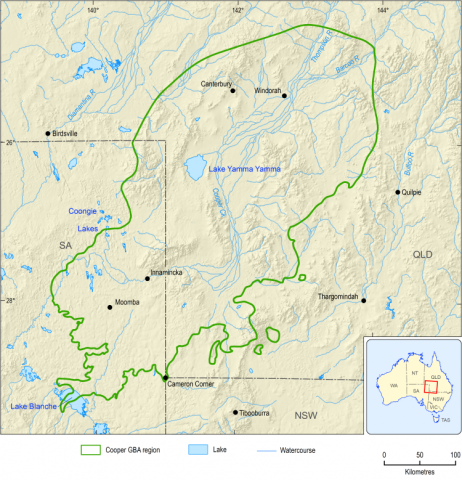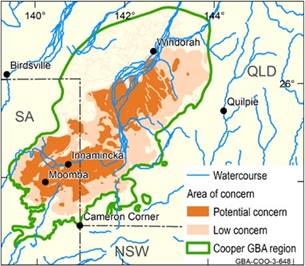The Geological and Bioregional Assessment (GBA) Program developed a robust methodology using causal networks to assess the regional-scale risks of unconventional gas resource development on water and the environment. The methodology allows consistent analysis of risks at each step in a chain of events – called pathways – from gas resource development activities to protected environmental and water-related values. The methodology can be applied to other regional-scale assessments in the future.
The GBA Program has developed a publicly accessible online tool (the GBA Explorer ) which allows anybody to interact with the complex causal network supporting the assessment. The tool lets users focus on the matters of relevance to them and examine the underlying scientific evidence in more detail. The Program worked closely with people living and working in the region. The experience and insights given by the local community and stakeholders directly informed what was investigated in detail by Program scientists and then assessed through the GBA Program.
| Key finding: The potential impacts due to future unconventional gas resource development on water and the environment were evaluated along 2,815 pathways. Potential impacts could occur in 27% of the Cooper GBA region, the area of ‘potential concern’ in Figure 1 . These can be mitigated through ongoing compliance with existing regulatory and management controls. Potential impacts in remaining areas are either not possible or change does not exceed a defined threshold. | |
| Assessment: Spanning the borders of southwest Queensland and northeast South Australia, the Cooper GBA region covers an area of approximately 130,000 km2 (Figure 1). The maximum development scenario is projected to increase existing disturbance by up to 27 km2, spread over less than 6% of the Cooper GBA region. This is 3% more than the existing oil and gas industry footprint in the Cooper GBA region. Of the potential impacts that could occur, most are at the surface and can be mitigated by existing controls. | FIGURE 1 Area of concern in the Cooper GBA region
Source: Geological and Bioregional Assessment Program (2021c). Element: GBA-COO-3-648 |
| Surface water: Development activities could potentially obstruct the flow of water across about 6% of the Cooper Creek floodplain. Ongoing careful design and existing management controls can mitigate these impacts. | Groundwater: Below the surface, natural barriers protect overlying aquifers. Less than 1% of the aquifer extent in the Cooper GBA region could potentially be impacted. Potential impacts in this area can be managed through mitigation and compliance with existing regulatory controls. |
| Environment: Invasive predators and weeds, and broadscale landscape changes due to fire or intensive grazing have the strongest influence on threatened species and protected areas in the Cooper GBA region. | Protected fauna and flora: Seven protected animals and 5 protected plants were prioritised for assessment based on the importance of the Cooper GBA region to each species. |

Product Finalisation date
- At a glance
- Explore this assessment
- Executive summary
- 1 About the assessment
- 2 About the region
- 3 Assessment, mitigation and monitoring
- 4 Potential impacts on water
- 5 Potential impacts on the environment
- 6 Potential impacts on protected fauna and flora
- 7 Conclusion
- References
- Glossary
- Contributors to the Program
- Acknowledgments

